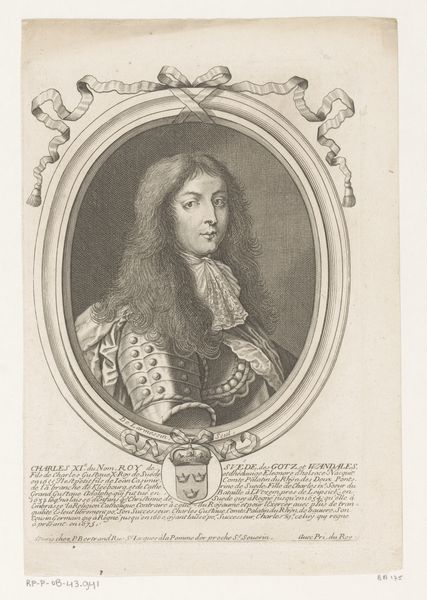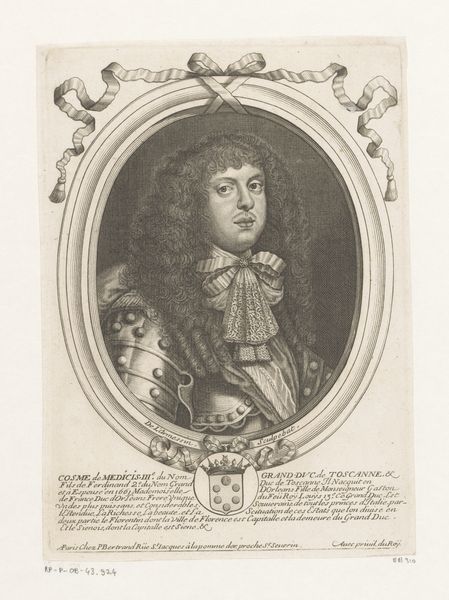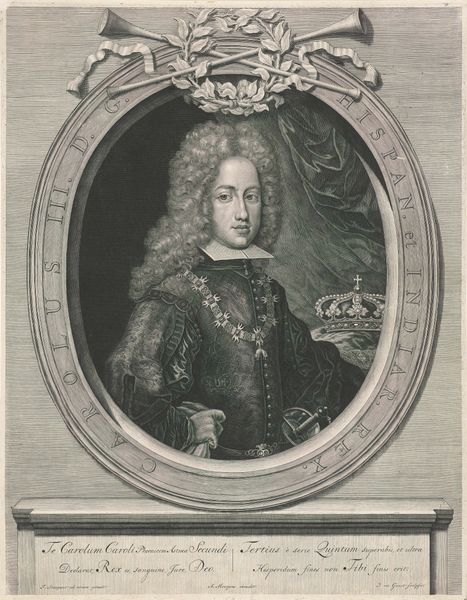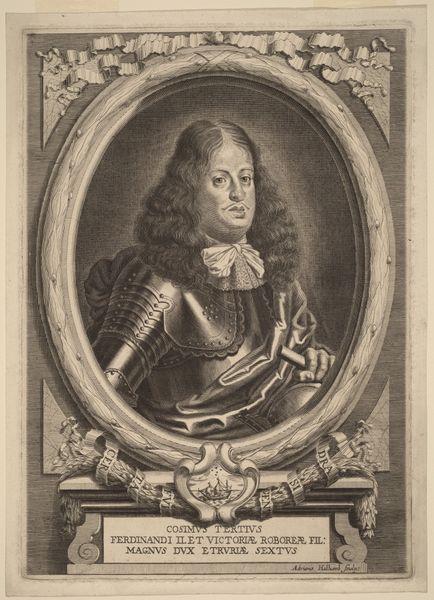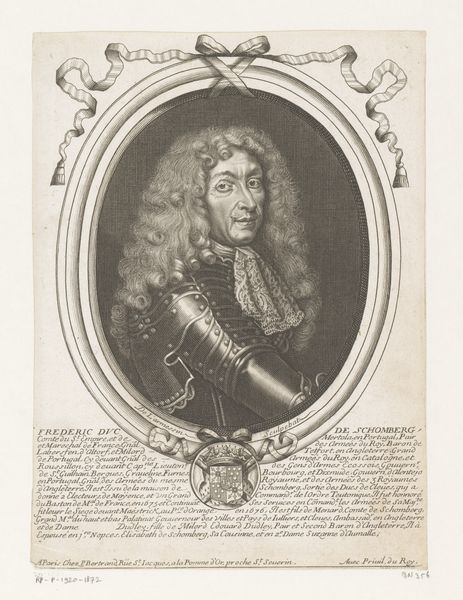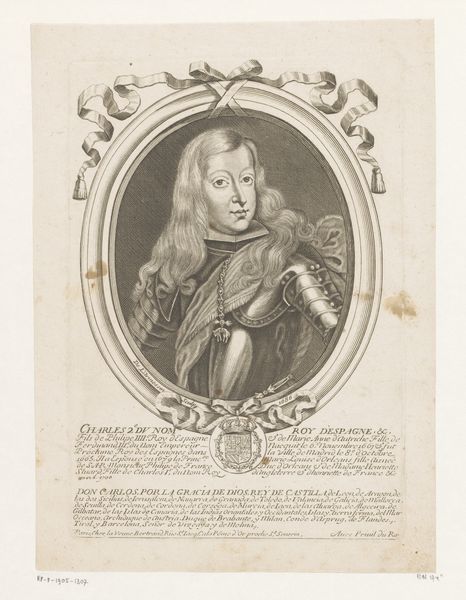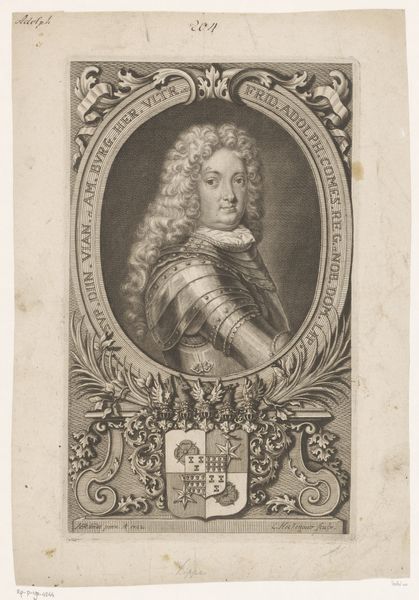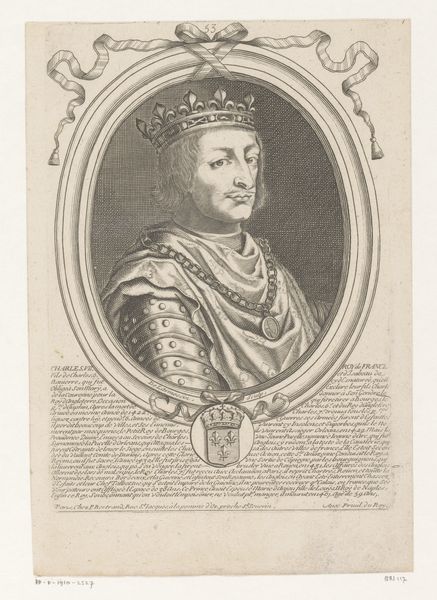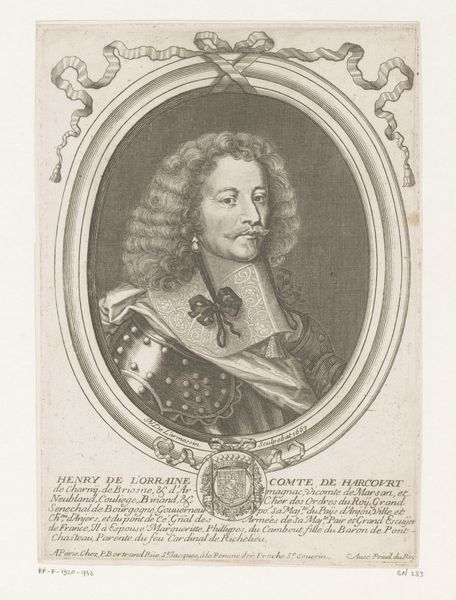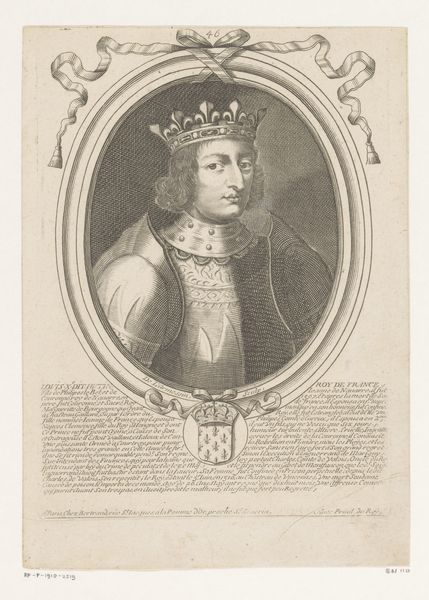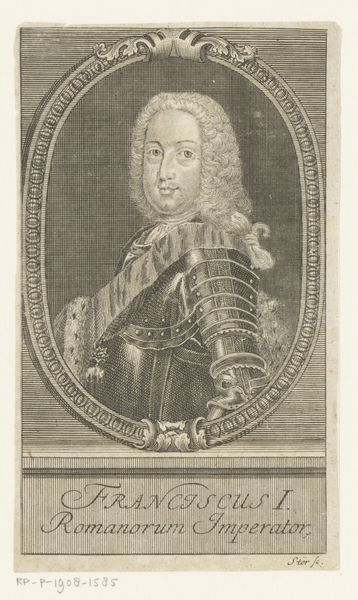
print, intaglio, engraving
#
portrait
#
baroque
# print
#
intaglio
#
old engraving style
#
engraving
Dimensions: height 234 mm, width 167 mm
Copyright: Rijks Museum: Open Domain
Curator: This is an engraving from 1679, a portrait of Charles II, King of Spain, by Nicolas de Larmessin I. It's part of the Rijksmuseum's collection. Editor: My initial reaction? It's incredibly detailed. The textures of the armor and the King's hair are almost palpable, a remarkable display of the engraver’s skill. There's something rather melancholic about the subject, though. Curator: The somber mood aligns with the historical narrative surrounding Charles II. He's often remembered as the last Habsburg ruler of Spain, and his reign was marked by political instability and his own ill health, which had significant implications for the future of the Spanish monarchy. This image functions, in part, as a reflection of dynastic anxiety. Editor: Look at the frame – that delicate ribbon seems almost too fragile to contain the rigid portrait underneath. The balance, the tension created through form— it is absolutely compelling! How does the broader symbolic language function within that period? Curator: Consider the role of portraiture in legitimizing power. Larmessin’s decision to depict Charles II in full armor adheres to established visual strategies of associating monarchy with strength. Yet, we can read something more subtle. Even in the armor, there's a vulnerability that resonates with the anxieties surrounding his reign, that very dynastic insecurity you notice here at the very structural level. Editor: Yes, I find it difficult to reconcile the imposing presence the attire tries to communicate with his expression. There is a detachment. How much was Larmessin attempting to immortalize the subject and how much were socio-historical elements like patronage driving the work? Curator: It’s both. Court artists served their patrons. They captured the likeness of rulers and perpetuated the visual rhetoric of power. Simultaneously, an artist’s choices and subtle cues allow for alternative interpretations that resonate in time, so something of both can co-exist and create a really complicated work. Editor: I am left reflecting on how formal artistic choices can simultaneously conform to, and subvert, the expectations of a society in periods of instability. Curator: And I find myself wondering about the very human dynamics present, and the burdens placed on those historical figures caught within a structure far bigger than them.
Comments
No comments
Be the first to comment and join the conversation on the ultimate creative platform.
